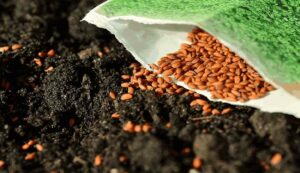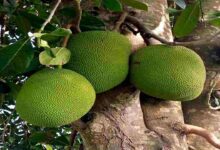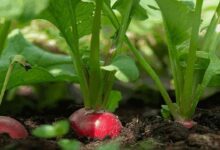Proper use of organic products increases the quality and productivity of crops
Organic Agricultural Products: Utilizing agricultural organic goods is a good way to guarantee the long-term sustainability, high production, and high quality of a variety of horticultural and agricultural crops. These chemicals improve soil fertility, assist in controlling pests and plant diseases, and are ecologically friendly. Selecting the ideal moment and approach is crucial to maximizing the advantages of these items.

Types of organic goods and their advantages
Based on their function, organic goods may be categorized into the following groups, including…
1. Biofertilizers
- Rhizobium, Azotobacter, Azospirillum, Phosphate Solubilizing Bacteria (PSB), and Potash Mobilizing Bacteria are among the types of biofertilizers that are quickly becoming more and more common.
- Use of biofertilizers has many advantages, including aiding in nitrogen fixation and boosting phosphate and potash availability.
The time to apply biofertilizers
- As a seed treatment at the time of planting.
- When transplanting, the roots are dipped in the biofertilizer solution.
- by soil sprinkling or drip watering while crops are growing.
How is biofertilizer used?
Combine one kilogram of jaggery and 200 grams of biofertilizer in ten liters of water, then let it sit overnight. Apply it to the plant roots or spray it over the field.
2. Biopesticide
- Several species of Trichoderma, several species of Bacillus, several species of Pseudomonas, Paecilomyces, Beauveria bassiana, and bio-nematicides are examples of bio-pesticide types.
- Benefits of biopesticides: They may be used to manage insects, nematodes, and diseases.
When to use the biopesticide
- Early illness symptoms: To avoid infection.
- Pre-disease control: To establish an environment that is resistant to illness.
How is a biopesticide applied?
Mix 5 to 10 grams of biopesticide with one liter of water to create a solution. Put it in the soil or mist the foliage with it.
3. Biostimulants
- Types of Biostimulants: Biostimulants include amino acids, humic acid, seaweed extracts, and more.
- Utilizing biostimulants has many advantages, including enhancing quality, increasing stress tolerance, and speeding up plant development.
- When to use biostimulants: During various phases of plant development. both before and after fruit development.
How are biostimulants used?
Using a sprayer, apply them to the leaves. They may also be mixed into the soil for utilization.
4. Natural Manure
- Types of organic manure: Organic manure includes a variety of items such as cow dung manure, Jeevamrit, and vermicompost.
- Using organic manure has the advantage of improving the soil’s biological, chemical, and physical characteristics. Microbial activity has significantly increased.
- When to use organic manure: When getting ready for the field. When transplanting, organic manure may be used.
How is organic manure used?
- Evenly distribute organic manure into the soil. Wrap it around the plant roots.
- Techniques for applying different bio-products
- Seed Treatment: Soak the seeds for 20 to 30 minutes in a solution of biopesticides or biofertilizers, then pat dry. It aids in early development and guards against infections spread by seeds.
- Soil Treatment: Mix Trichoderma or PSB uniformly throughout the field to make the soil nutrient-rich and disease-free.
- Transplanting Treatment: After 30 minutes of dipping the plant roots in a mixture of biofertilizer and biopesticide, plant.
- Foliar Spray: To feed the plants and shield them from insects, nematodes, and diseases, biostimulants or biopesticides are sprayed on them.
- Drip Irrigation: Use a drip system to apply biofertilizers to plants after mixing them with water.
Particular Care
- Prior to use, choose organic materials according to the results of the soil test.
- Quantity: Just use the amount that is advised.
- Storage: Store organic goods in a dry, cold environment.
- Mixing: Avoid combining chemical insecticides and fertilizers with bio-products.

